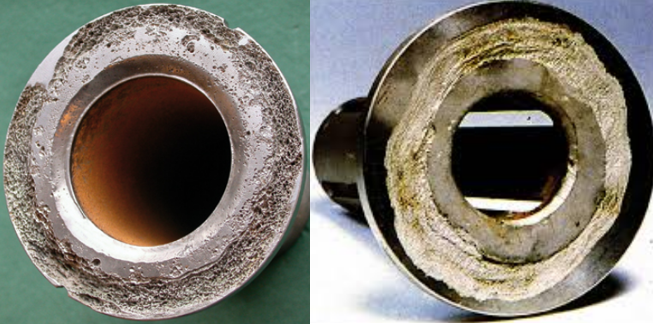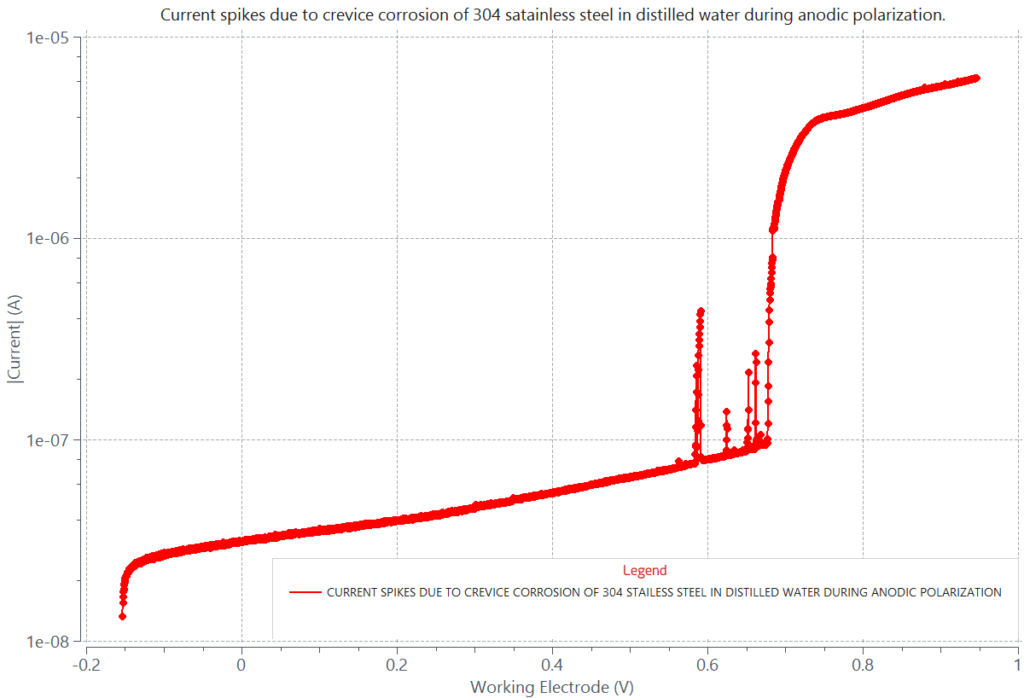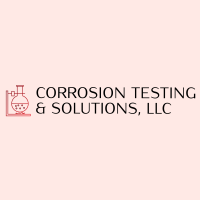CREVICE CORROSION
UNIFORM CORROSION
Crevice corrosion is a localized attack that occurs in occluded areas at metal/metal or metal/nonmetal tight junctions exposed to a corroding stagnant electrolyte with limited air circulation. This type of attack is found in unsealed joints, in threaded connections, under surface deposits, and under gaskets, washers, teflon, clamps, flanges, bolts, or nuts. Crevice corrosion is prevalent in metals and alloys covered with a protective oxide film. The crevice environment at the occluded site can reach high acidification causing breakdown of the barrier oxide film and inducing localized attack. Crevice corrosion at bolts and flange joints of stainless steel is common in marine environments.
The graph Current vs. Working Electrode Voltage shown below was generated according to standard ASTM G61. It displays crevice corrosion data collected during potentiodynamic anodic polarization of 304 stainless steel (SS) in distilled water. The observed current spikes starting at about 0.580 V are due to breakdown and re-passivation events of the protective oxide film on the steel surface, precursors events to the initiation of crevice corrosion attack. The crevice corrosion took place at the interface joining the 304 SS sample and the epoxy resin mount holding the sample. The start of crevice corrosion was revealed by a sudden large increase in anodic current due to fast metal dissolution at about 0.680 V, followed by a continuous rise in current caused by unimpeded crevice corrosion.
Crevice corrosion testing is done according to ASTM G78 for iron-base and nickel-base stainless steels in seawater, in chloride-containing natural waters, and in other aqueous chloride environments. Methods B, D, and F of ASTM G48 are used with ferric chloride solution to evaluate the crevice corrosion resistance and determine the critical crevice temperature of nickel-based, chromium-bearing alloys, and of stainless steels. Standard ASTM G61 covers a potentiodynamic polarization method to determine the relative metal susceptibility to localized crevice corrosion.

Typical examples of Crevice Corrosion attack in 316 stainless steel steam condenser at tight metal junctions accessed by warm seawater. The attack was enhanced by the presence of chloride ions in the seawater containing 3.5% NaCl (2.12% of chloride).

